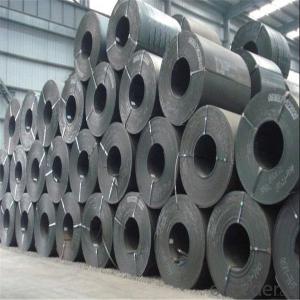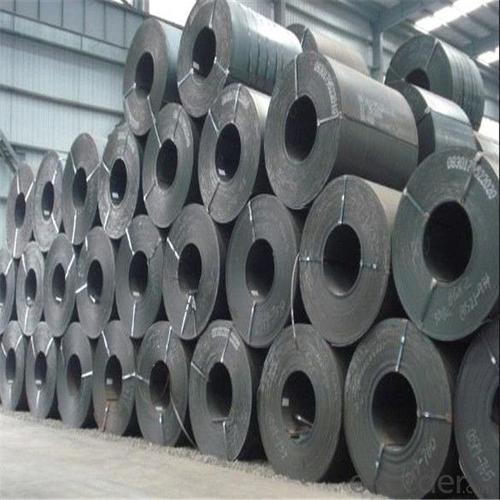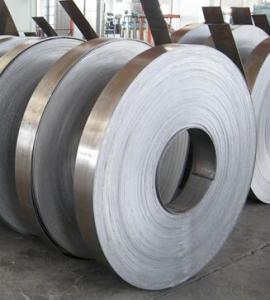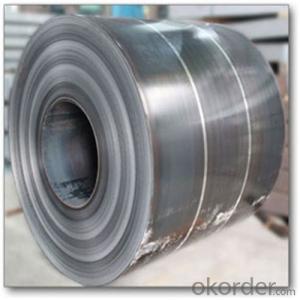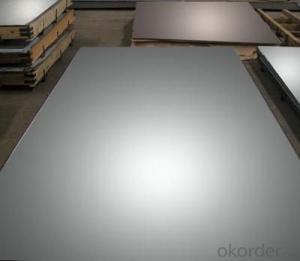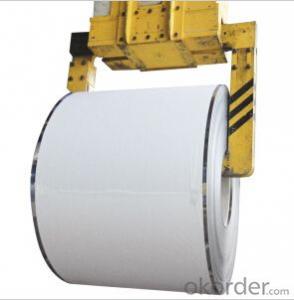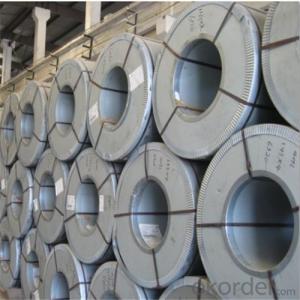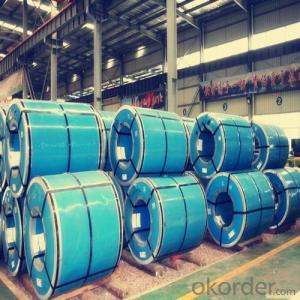Coil steel prime hot rolled competitive price
- Loading Port:
- Shanghai
- Payment Terms:
- TT OR LC
- Min Order Qty:
- 50 m.t.
- Supply Capability:
- 1004 m.t./month
OKorder Service Pledge
OKorder Financial Service
You Might Also Like
Specification
Hot rolling is a mill process which involves rolling the steel at a high temperature (typically at a temperature
over 1700° F), which is above the steel’s recrystallization temperature. When steel is above the recrystallization
temperature, it can be shaped and formed easily, and the steel can be made in much larger sizes. Hot rolled steel
is typically cheaper than cold rolled steel due to the fact that it is often manufactured without any delays in the
process, and therefore the reheating of the steel is not required (as it is with cold rolled). When the steel cools
off it will shrink slightly thus giving less control on the size and shape of the finished product when compared to
cold rolled.
This makes hot rolled steel a good choice for the manufacturing of structural components, such as I beams or
simple cross sections, such as rail tracks. It is also used to produce sheet metal.
Standard and Grade :
Hot rolled steel coils | ||||
JIS | ASTM | SAE | EN | |
Commercial quality | G3131 SPHC | A569 A635 A659 A1011 CS Type A,B,C | 1006~1025 |
10111 DD11 |
Drawing quality | G3131 SPHD | 1006~1010 | 10111 DD12 | |
Deep drawing quality | G3131 SPHE | A622 A1011 DS Type A,B | 1006~1010 | 10111 DD13 DD14 |
General structure (T.S.<490N/MM2) | G3101 SS330 SS440 G3106 SM400A G3132 SPHT1 SPTT2 SPHT3 | A36 A283 GR.C A570 GR.30~40 A1001 SS GR.30~40 |
1010~1025 | |
General structure (T.S.≥490N/MM2) | G3101 SS490 G3106 SM490A SM490YA | A570 GR.45~50 A607 GR.45~70 A1011 SS GR.45,50 |
J1392 050X | |
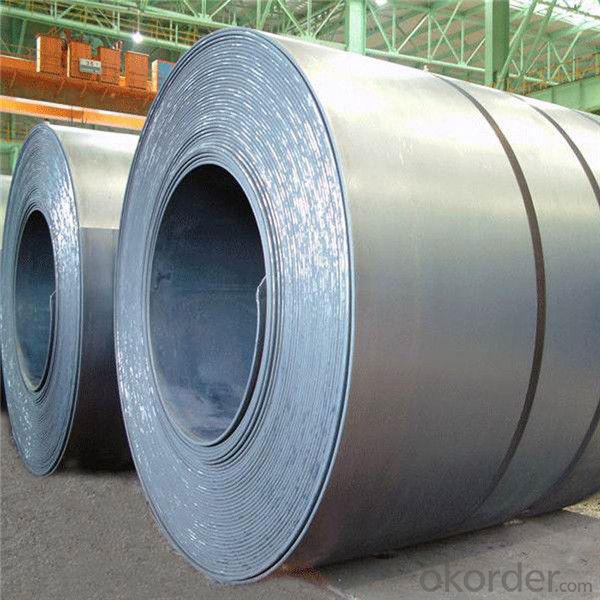
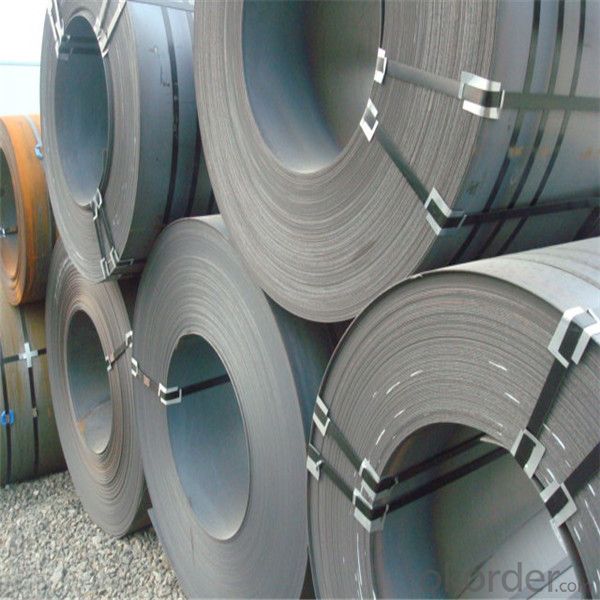
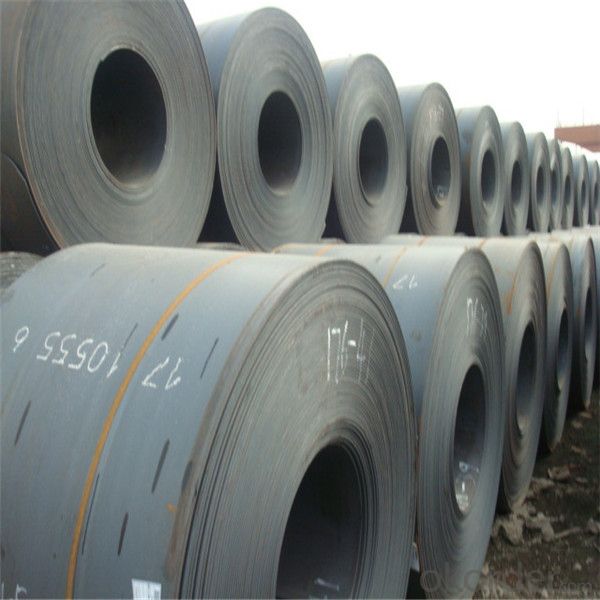
|
|
Application :
Automobile Industry, electrical appliance, machinery manufacturing, container manufacturing, shipbuilding,
bridge, pipeline, and receive high acclaim from our customers for its excellent quality.
Packing:
Packaging Detail | The packing of coil consists of anti-damp paper ,PVC film ,hardboard paper , steel box , strapped with steel strips, fitted with locks and edge protectors and guarantees the optimal condition of the delivered goods. Each coil can be additionally fitted with wooden/steel skids(eye of the side) or wooden pallets(eye of the sky) |
Delivery Time | within 30 days of receipt of LC original or prepayment |
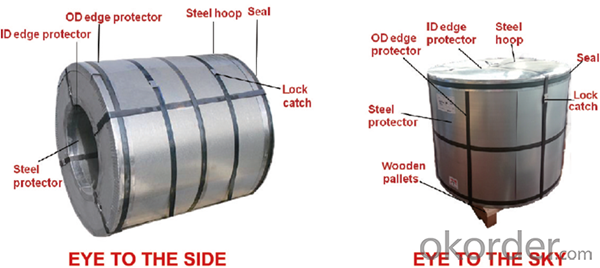
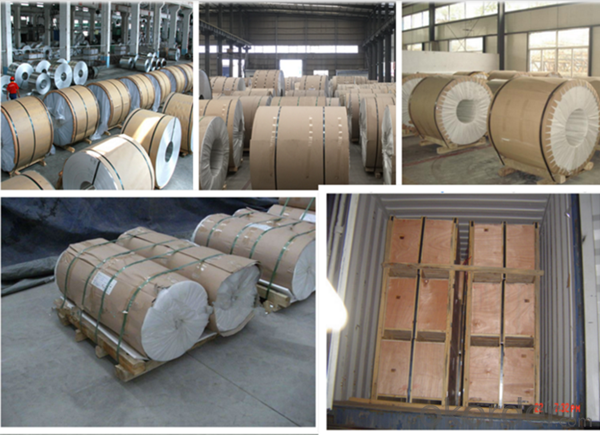
Our Services
MOQ | FCL, 25 metric tons per 20GP, can be assorted with different sizes. |
LCL for trial order is acceptable. | |
Price Term | EX-WORK, FOB China Port, CNF, CIF |
Payment | T/T, 30% advanced payment before production and balance before shipment; OR Irrevocable L/C at sight. |
Delivery Time | within 30 days of receipt of LC original or prepayment |
FAQ:
1. Can you offer OEM to me? What about MOQ?
Of course, we are a professional with OEM manufacturer for 9 years. the MOQ can be 50 ton/ order..
2. How to guarantee the quality of the products?
We have established the international advanced quality management system,every link from raw
material to final product we have strict quality test;We resolutely put an end to unqualified products
flowing into the market. At the same time, we will provide necessary follow-up service assurance.
3. How long can we receive the product after purchase?
Usually within thirty working days after receiving buyer’s advance payment or LC. We will arrange the
factory manufacturing as soon as possible. The cargo readiness usually takes 15-25 days, but the
shipment will depend on the vessel situation.
4.Q: What is your terms of payment ?
We prefer LC at sight and 30%T.T in advance ,balance after the copy of B/L
- Q: How are steel coils coated?
- Steel coils are coated using a process called coil coating, where a thin layer of protective material such as paint, plastic, or zinc is applied to the surface of the steel coil. This can be done through various methods including roll coating, spray coating, or electroplating, depending on the desired coating material and application.
- Q: How much money do you think I could get per lb if I wanted to trade in scrap steel material?
- Scrap steel is usually traded per ton. Average steel prices fluctuate on a daily basis. General prices for scrap steel are around $100 - $200 per ton. For daily scrap steel prices check the source below
- Q: How are steel coils used in the production of heating systems?
- Steel coils are typically used in the production of heating systems as a key component in heat exchangers. The coils provide a large surface area for heat transfer, allowing for efficient heating of air or water. They are often used in furnaces, boilers, and air conditioning units, where they help to transfer heat from a heat source to the surrounding environment or distribute it throughout a building.
- Q: What is the average width tolerance for steel coils?
- The average width tolerance for steel coils can vary depending on the specific industry and application. However, in general, the standard width tolerance for steel coils is typically around ±0.005 to ±0.020 inches.
- Q: Hello... I'd like to know where I can find proof of this answer as well please. My own searching didn't come up with anything concrete.I'd like to know how much the ambient temperature inside of a hollow steel tube would rise by if the outside of that tube was exposed to an 1100 degree flame for a period of 3 seconds.If specifics help, they are something along the lines of 3.125 O.D. tube, 0.35 wall thickness. High grade steel, can't be more specific than that sorry.Thanks for any answers!
- I cant see how you could solve that when you don’t know the type of steel ( specifically). There are many in the range you have stated. Also volume, respecting the length of the tube and coverage of the exterior heat. Logic tells us however 3 seconds is not very long so next you would need to know are the post factor. if the flame was from say a cutting torch and the tube was 20' in length in an ambient exterior temp of 32deg. We could us known a test and determine the rate at which the heat was spread out through the steel. You can also measure pressure in the tube You can find easily resource material on the amount of energy it takes to raise temp by a factor of one. By testing the pressure of a sealed tube of a given length you can apply the solution in scale to your problem. You can also try sticking your finger in it.
- Q: Are steel coils affected by temperature changes?
- Yes, steel coils can be affected by temperature changes. Steel is a metal that expands when heated and contracts when cooled. This expansion and contraction can lead to changes in the dimensions and shape of steel coils. Additionally, extreme temperature variations can cause thermal stress, which may result in warping, cracking, or weakening of the steel coils. Therefore, temperature changes can have an impact on the performance and integrity of steel coils.
- Q: is it much difference between 1095 and 1080,,,1065,,,1060 or even 1045 steel?please help and thanks!
- Carbon Steel Swords
- Q: How are steel coils used in the manufacturing of automotive exhaust systems?
- Steel coils are used in the manufacturing of automotive exhaust systems as they are formed into specific shapes and sizes to create the necessary components, such as pipes, mufflers, and catalytic converters. The coils are precision-cut, welded, and bent to fit the design requirements and ensure efficient exhaust flow, durability, and resistance to high temperatures and corrosion.
- Q: a steel abr sells for about 879 now...a mith just over 1kany suggestions on which-keyword WHICH steel item to make-which is the best-exp wise, and steel bar conservative wise.
- If members, cannonballs. If not, steel kites, I suppose. Steel Platebody only alchs for 1200, and requires 5 bars... But I stuck with steel, till 70 smithing... cheaper, and requires less coal to make....
- Q: What are the common problems encountered with steel coils during production?
- During production, steel coils often encounter various common problems. Among them, coil slippage is one of the most frequent issues, occurring when the coils shift or slide out of place during handling or transportation. This can result in damage to the coils or pose a safety risk to workers. Another problem commonly encountered is coil rusting or corrosion. If steel coils come into contact with moisture or are not adequately protected, they are susceptible to rust. This can compromise the structural integrity of the coils and lead to product defects or failure. Coil breakage is also a frequent problem that arises when the coils are subjected to excessive stress or tension, causing them to crack or break. Improper handling or storage, as well as production issues such as inadequate rolling or cooling processes, can contribute to coil breakage. Coil surface defects are another issue commonly observed. These defects can manifest as scratches, dents, or uneven surfaces on the coils. Surface defects can compromise the appearance and quality of the final product, rendering it unsuitable for certain applications. Lastly, coil contamination is a problem that can occur during production. Contaminants such as dirt, oil, or foreign particles can adhere to the surface of the coils, leading to quality issues or difficulties in further processing. Contamination can arise from improper handling, inadequate cleaning processes, or poor environmental control. To address these common problems, it is essential to adopt proper handling and storage practices. This involves using appropriate lifting and transporting equipment, ensuring the coils are stored in a dry and clean environment, and implementing effective rust prevention measures. Regular inspections and quality control checks can also aid in identifying and addressing any issues early on, preventing further damage and ensuring the production of high-quality steel coils.
Send your message to us
Coil steel prime hot rolled competitive price
- Loading Port:
- Shanghai
- Payment Terms:
- TT OR LC
- Min Order Qty:
- 50 m.t.
- Supply Capability:
- 1004 m.t./month
OKorder Service Pledge
OKorder Financial Service
Similar products
Hot products
Hot Searches
Related keywords
